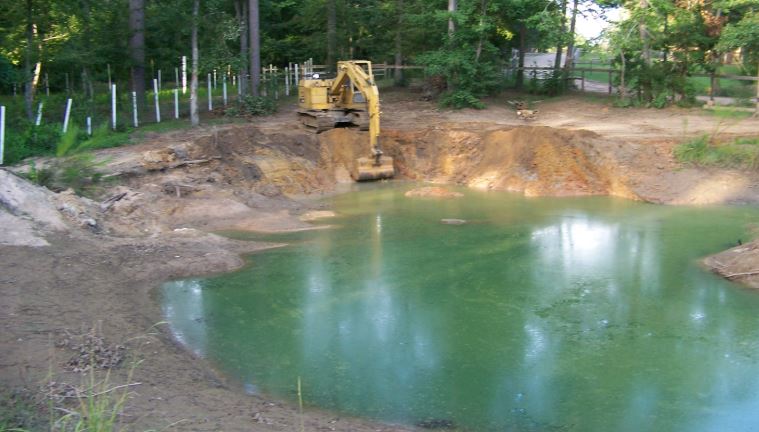
While it may be a constant and uphill battle, there are ways to reduce and eliminate excessive nutrients once they are in your pond. It is ideal to prevent the nutrients from entering the pond to begin with, but that not always entirely possible and even if future nutrient additions are limited, the pond most likely has an abundant supply to begin with.
Dredging can be a quick and effective way of removing nutrients. It will remove a vast amount of the organic sludge on the bottom of the pond and leave your pond deeper and with less overall nutrients. The drawbacks are that it is an expensive process that often requires permitting and is not always feasible in every lake or pond. Access is critical and many ponds simply cannot be reached to dredge enough material out to make a dent in the nutrient abundance.
Another thing to consider is where the dredged material will be placed. It makes great fertiliser on fields and gardens, but it must be located far enough away from the pond that it will not all wash back in when it rains.
This is a new buzz word within the industry and is a very effective way to eliminate excessive nutrients and “dredge” a pond naturally. This process consists of adding supplemental bacteria and enzymes to the pond to boost natural levels and speed up the decomposition process. It is often best to also include added aeration to ensure proper oxygen levels are present at the pond bottom to allow for the faster decomposition.
Probiotics can be very effective, but is a longer term approach to nutrient management than dredging. The benefits are cleaner water, no permitting, and often much less expensive than equipment dredging with no residual sludge that must be relocated.
Vegetation Removal
A simple and fairly effective way is simply removing the existing plant material from the pond. This is not treating it chemically where it dies and stays in the system. It is physically cutting, pulling, and removing the plants themselves from the pond. This will not only eliminate the symptom of over population of plants, but all the nutrients held within the plants are then removed from the system.
Just like with dredging, you would need to remove the plants far enough that they would not make their way back into the pond. This method is very inexpensive and does not require permitting. It is very labour intensive and may take years of doing so to remove enough nutrients to show considerable progress.
There are products on the market that will not only clarify the water column, but also can successfully bind nutrients to the pond bottom limiting their availability to plants. While this technically does not remove the nutrients from the system, it can make some unavailable to natural processes. Aeration has also been show to help with binding as properly oxygenated bottom water can allow for phosphorus to remain bound in the sediment instead of in solution for algae growth.
Other Plants
All plants require nutrients to live. Some require more than others. One way to combat excessive nutrients is to plant species that are more desirable to use those nutrients. This is often a personal preference situation as a weed is just an unwanted plant. By planting plant species you like to have in and around your pond, you can use up some of the nutrients with more desirable plants. Native species are often the best as they spread less rapidly and can be held in check more easily.
